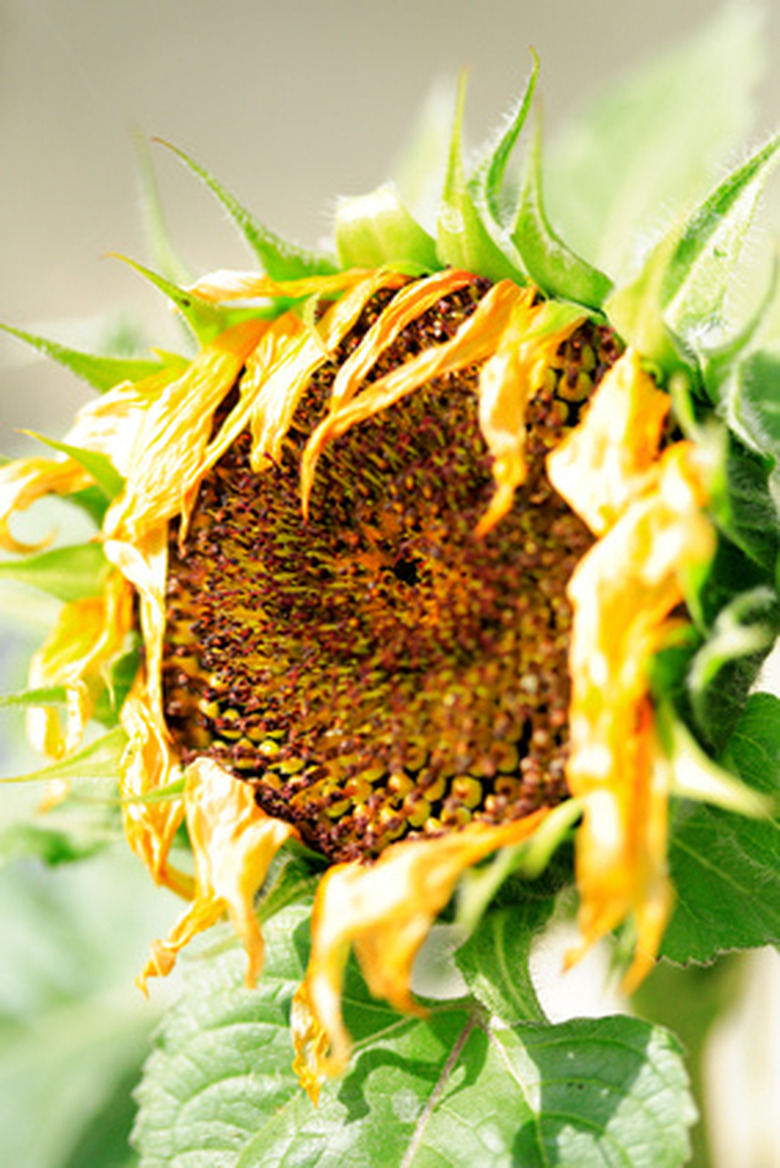How To Troubleshoot A House Plant With Wilting Leaves
Things Needed
- Potting soil
- Pebbles (optional)
- Plant pot
- Bucket/large bowl
- Mild dish detergent
Wilting leaves on houseplants indicate the plant is under stress and needs your immediate attention. Typically, wilting begins at the terminal ends of branches and proceeds to the entire plant, leaving it limp and lifeless. Without attention, wilted plants die quickly. With proper troubleshooting and diagnosis, corrective measures to resurrect wilted plants often result in revived plants that suffer no ill effects.
Step 1
Check the soil of houseplants with wilting leaves. The most common cause of wilting is lack of water. If soil it dry, replenish water immediately. Excessively dry soil often pulls away from the side of the pot or becomes compact. Watering results in water running through the pot without wetting the soil. Submerge the entire plant pot into a bucket or bowl of lukewarm water. Keep the pot under water until all bubbles cease. Remove and allow to drain before moving to its normal location.
- Wilting leaves on houseplants indicate the plant is under stress and needs your immediate attention.
- Excessively dry soil often pulls away from the side of the pot or becomes compact.
Step 2
Re-pot plants growing in soggy soil. Soggy soil is often overlooked, but is a common reason for wilting. Remove the plant from the pot and shake to remove excess soil. Select a new container, or add pebbles to the bottom of the old pot to improve drainage. Fill 3/4 full with fresh soil and position the plant in the new soil. Fill in around the plant with soil and firm down to secure the plant. Use caution not to over-water the plant.
- Re-pot plants growing in soggy soil.
- Remove the plant from the pot and shake to remove excess soil.
Step 3
Check the roots of wilted plants, particularly those grown in soggy soil, as root rot also causes wilted foliage. Look for dark or mushy roots. If the entire root system appears rotted, discard the plant. If some white or light tan roots exist, trim away infected roots, leaving only fresh young roots. Re-pot following the directions in step 2.
Step 4
Examine leaves and stem for signs of insects. Sucking insects often cause leaves to wilt. Treat with insecticide to prevent insect infestation. For a non-chemical alternative, wash leaves in a mixture of a few drops of mild dish detergent in water. Coat all leaves and allow to dry.
- Check the roots of wilted plants, particularly those grown in soggy soil, as root rot also causes wilted foliage.
- If some white or light tan roots exist, trim away infected roots, leaving only fresh young roots.
Step 5
Check the plant's roots for signs of being root bound. Turn the pot over and look for roots that have grown through the bottom holes. Tap the pot gently to remove the plant and check for tightly coiled roots. Re-pot in a larger container with fresh soil if the plant is root bound.
Step 6
Look for evidence of salt buildup on the surface of the soil. White crusty soil indicates excess buildup of salts and other minerals. Re-pot the plant in new soil.
- Check the plant's roots for signs of being root bound.
- Turn the pot over and look for roots that have grown through the bottom holes.
Step 7
Check the temperature near your plant. Excessive heat or exposure to chilled windows or drafts both cause wilting. Move the plant to a draft-free area away from sources of excessive heat (including direct sunlight) and where temperatures remain consistent.
Warning
Always follow the recommended application rate of fertilizer, as too much fertilizer can also cause wilting and may permanently damage the plant.
